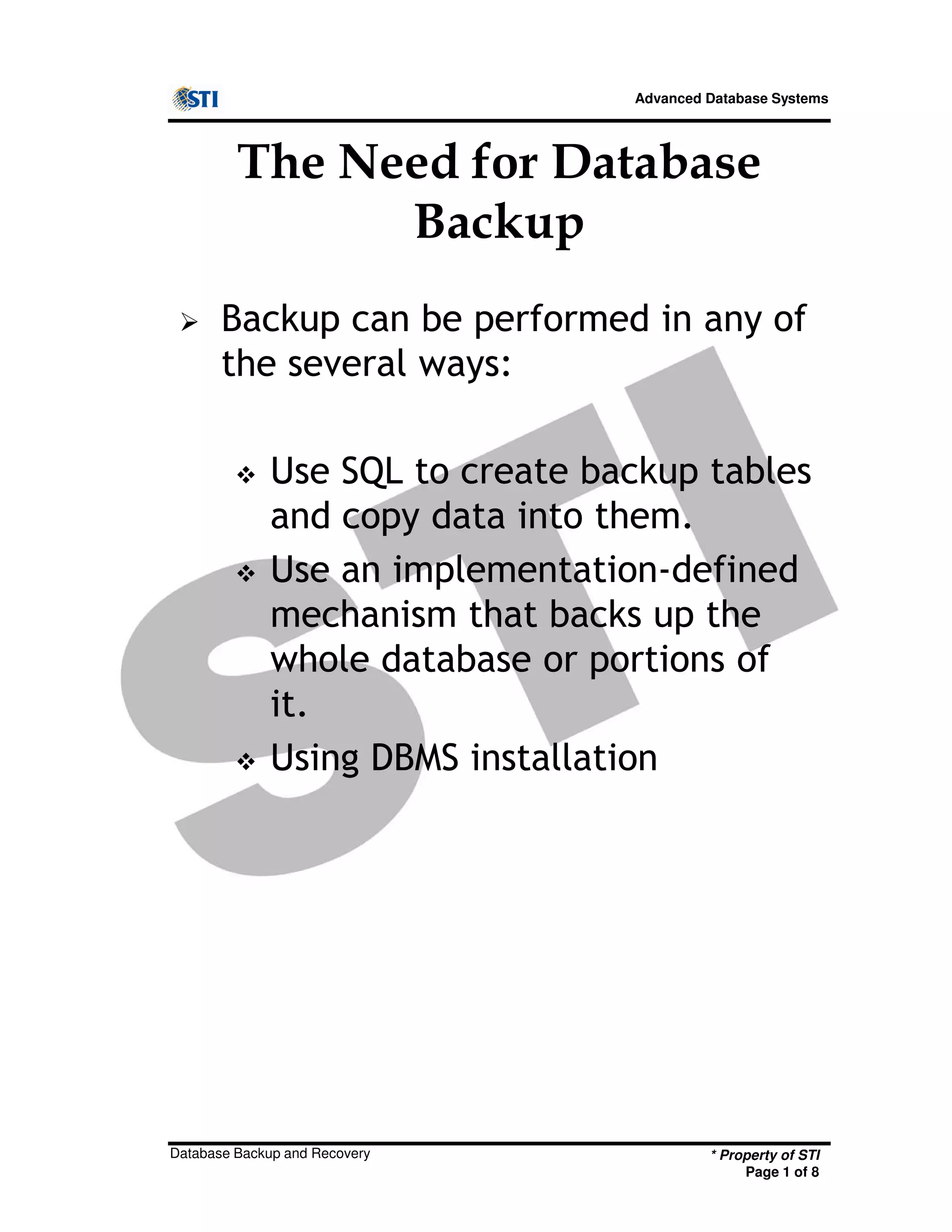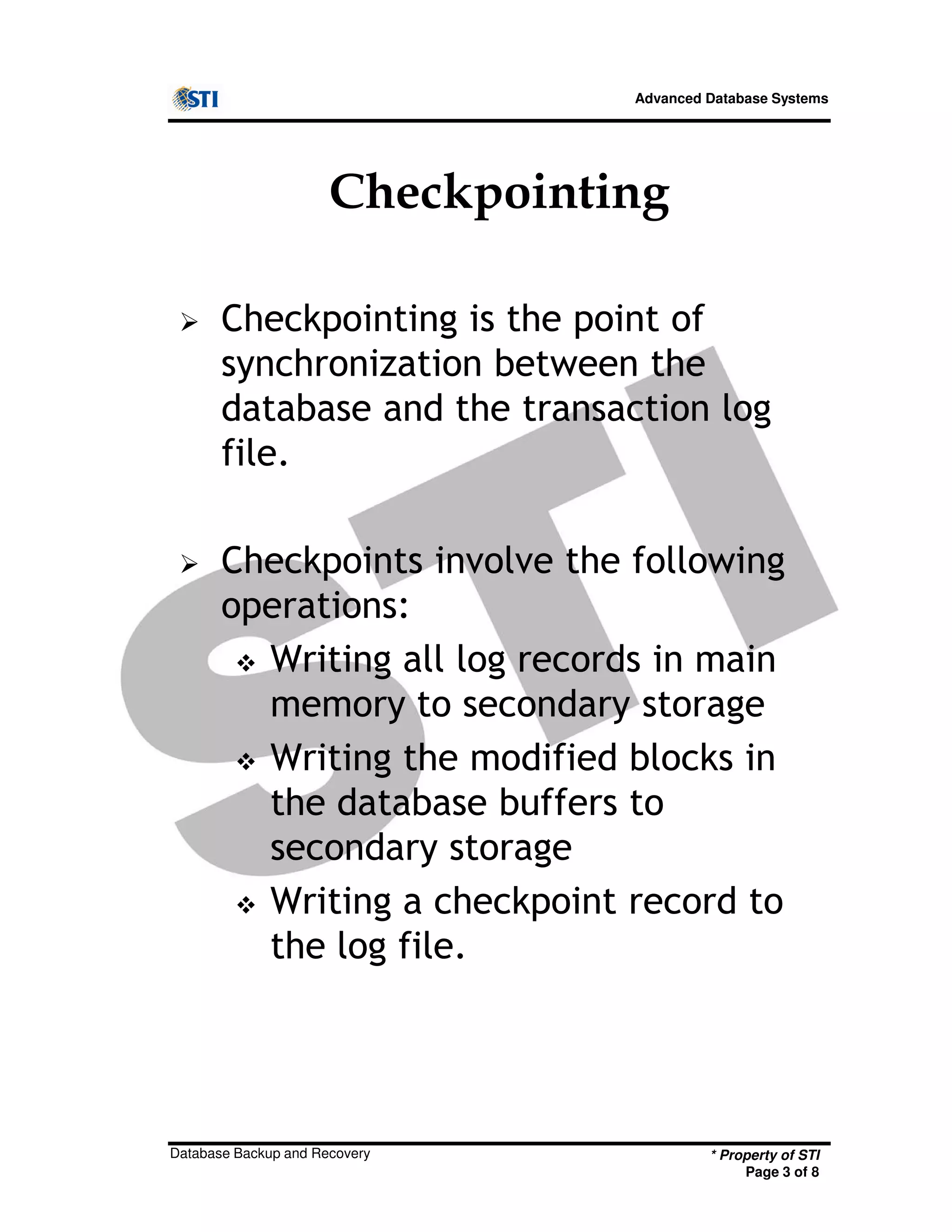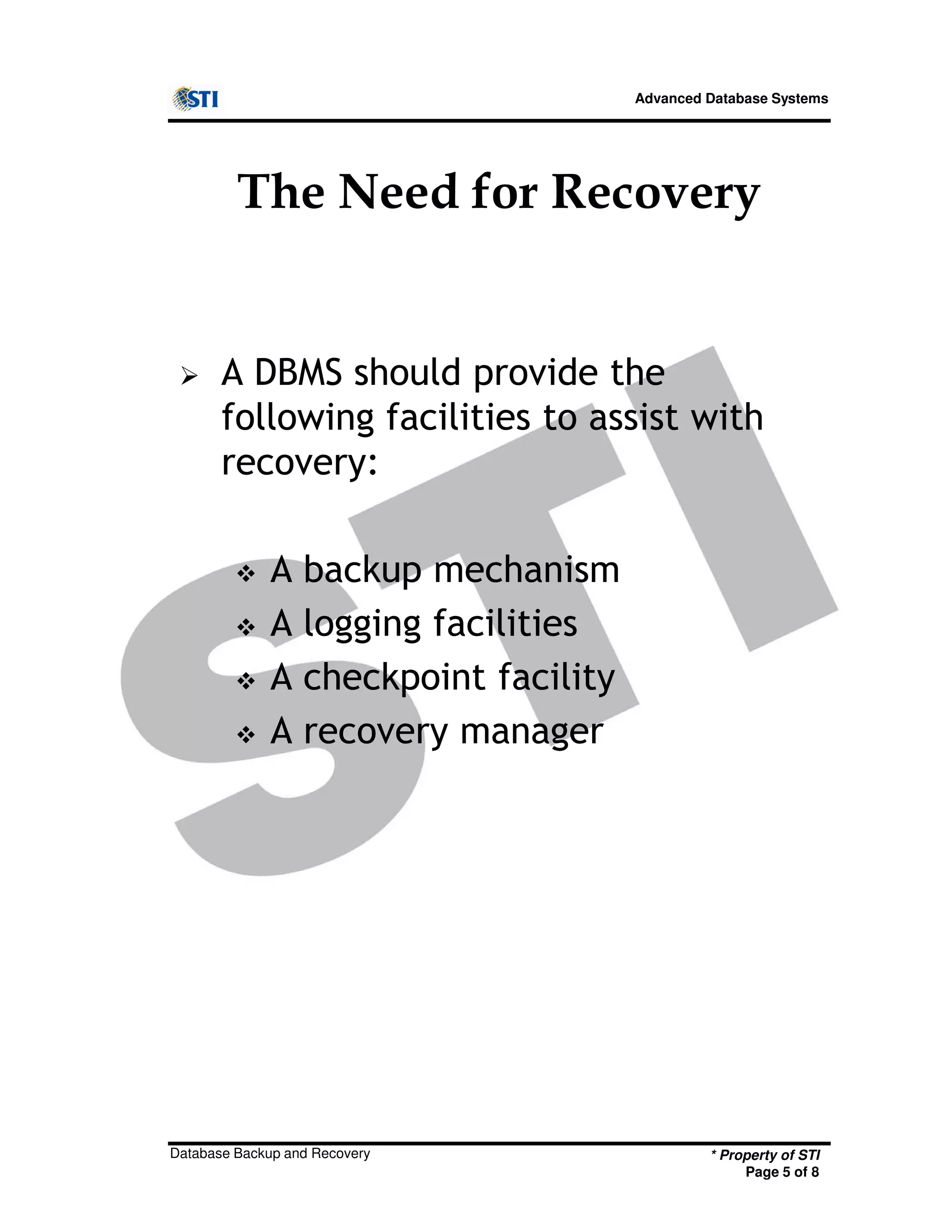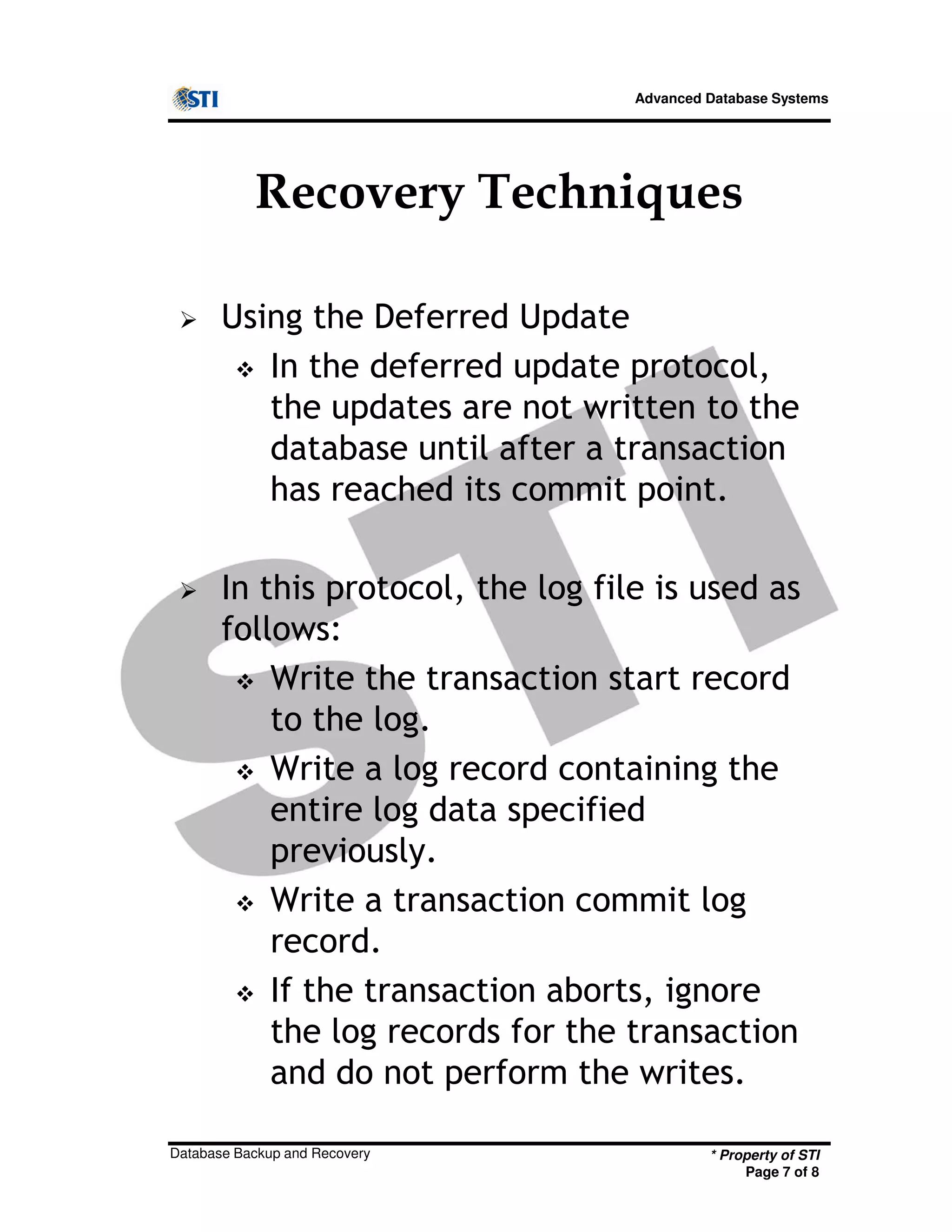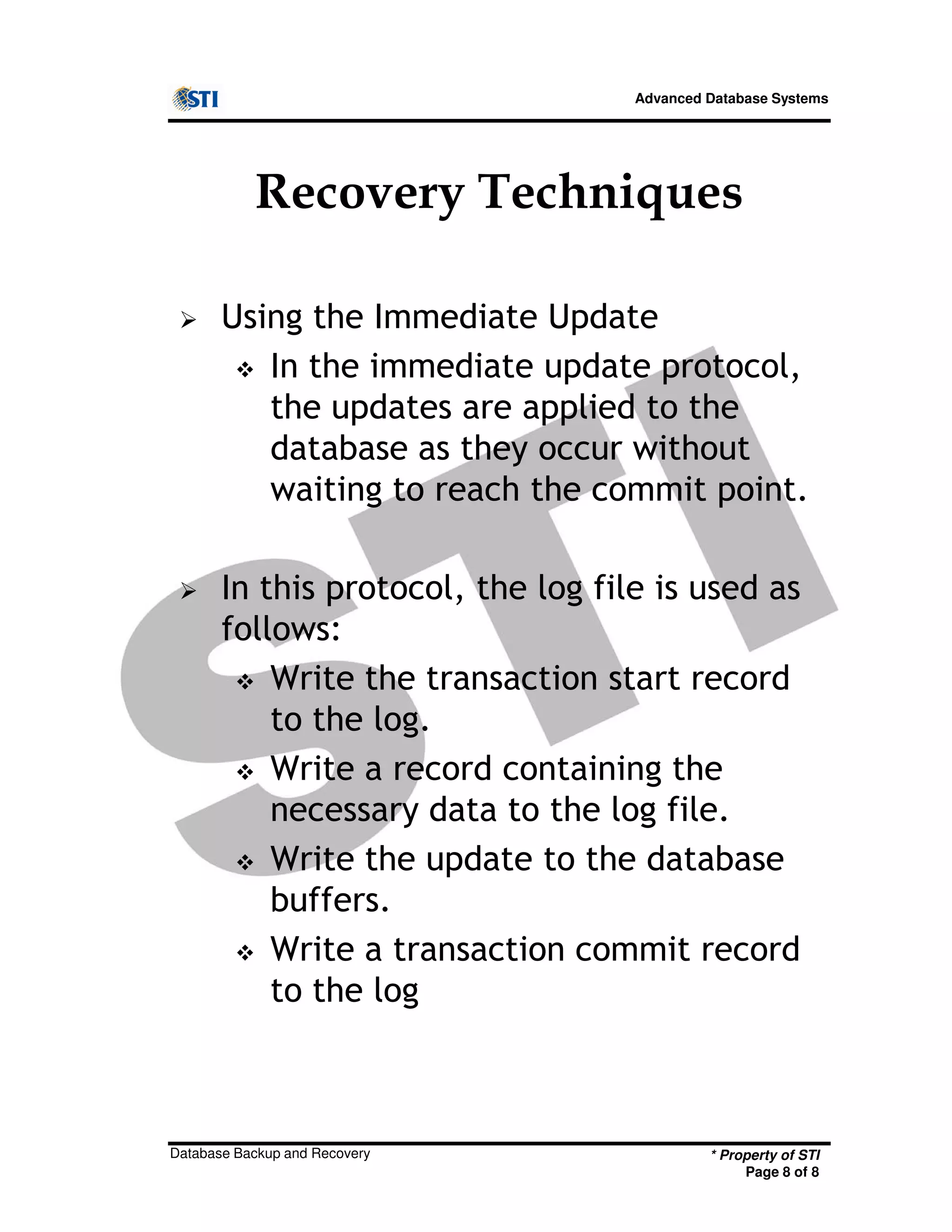The document discusses advanced database systems, focusing on the importance of database backup and recovery mechanisms. It covers various methods of backup, the role of log files in tracking transactions, and the significance of checkpointing for recovery processes. Additionally, it outlines different recovery techniques based on the extent of database damage, including deferred and immediate update protocols.
